#The Shortwave Mystery
Explore tagged Tumblr posts
Text
youtube
Shortwave clips from 1982, Tape 1 side A
In 1982 I made recordings of how it is during a "sunspot max" time, using a Realistic DX-302 near Atlanta Georgia USA.
17 notes
·
View notes
Note
Re: shortwave radio post - what do you mean by “Brain feelings based on strange stimulus”? I feel as though I intuitively relate but can’t put it into words
just for me personally I find shortwave radio recordings to be extremely emotionally activating on like a lizard brain level. some kind of ASMR effect maybe? some of the more threatening-sounding beeps and boops make me so terrified down in my limbic system (that is to say, irrationally, and aware of the irrationality) that I have very much prefer to turn the volume down or even skip past the playbacks if I'm watching a video about them.
but even the non-beep type stuff is incredibly emotionally activating for me, even if it's fake. for example the wonderful scene in Gravity where she picks up what sounds like a Kazakh or nearby person on her shipboard shortwave and can't communicate with him to explain that she's marooned in space of course, but she hears in the background of his transmission the sound of his little baby fussing. and since the word "baby" is pretty lingua franca at this point she is able to communicate to him that she would like to hear his baby, and he obliges, and the baby babbles to her over the shortwave while she floats alone in space thousands of miles away. i cry at this part every single time because it's such a good tableau of the hopelessness of her isolation, her "reasons" for wanting to survive, the universal language of humanity, etc etc. it's very Soviet science fiction flavored which i appreciate as long as it doesn't get too mystical.
the shortwave radio as a concept is intensely romantic, not in the lovey dovey way but the mystery and adventure way. and it's also incredibly silly. silliness prevails at all levels of the medium, which is good
106 notes
·
View notes
Text
Just know that I tried very hard weasel in more references to my favorite mineral samples but no matter what I tried there was no reason to bring up wulfenite and rhodochrosite.
But I’m posting them anyway!
Rhodochrosite sample and something else I found at a local mine that’s definitely manganese based and may also be rhodochrosite


The left was labeled wulfenite/vanadinite from AZ and the left is wulfenite from Mexico


Raw corundum (ruby) under long wave UV and chalcedony geode under shortwave UV


My UV collection under long (top) and short wave (bottom)
The yellow sample on the top left is scapolite, the white and green samples on the bottom left are aragonite, and the large rock on the top right is opal.


And some more glowing stuff from a local mine, including willemite/calcite/franklinite and what I suspect is manganocalcite. (The stuff on the right is a mystery to me)


#I’d planned to properly label all these in the summer when I got them then didn’t#and now I’ve forgotten half of them#I maxed out on photos but know I also am obsessed with the covellite sample I have#apatite is also very pretty#(we dont talk about the legality of the actinolite sample)#the children yearn for the mines#shiny rocks#minerals#crystals#wulfenite#rhodochrosite#geology
14 notes
·
View notes
Text

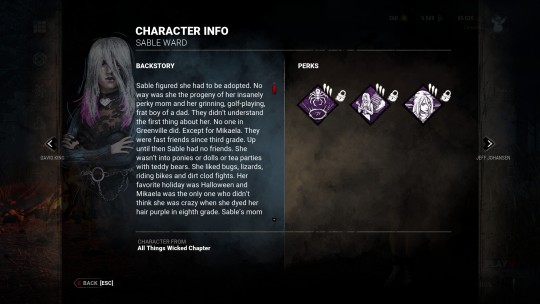
sable ward lore



Sable figured she had to be adopted. No way was she the progeny of her insanely perky mom and her grinning, golf-playing, frat boy of a dad. They didn’t understand the first thing about her. No one in Greenvile did. Except for Mikaela. They were fast friends since third grade. Up until then Sable had no friends. She wasn’t into ponies or dolls or tea parties with teddy bears. She liked bugs, lizards riding bikes and dirt cloc fights.Her favorite holiday was Halloween and Mikaela was the only one who didn't think she was crazy when she dyed her hair purple in eighth grade. Sable's mom was furious. Her dad didn't even notice. Mikaela went with her to the mall when she got her ears pierced and helped her pick out her first tattoo. An occult symbol hidden in a place her parents would never see. Mikaela declined to get her own tattoo. She flirted with the dark side, but she didn't live it. Not like Sable. The dark side made sense to Sable, and she reveled in it. Partly because it freaked out her parents and teachers. Partly because it felt like who she was. Some called her a goth because of the way she presented herself. But she wasn't into labels. She loved horror movies and found the occult exciting. It made sense to her. She knew that the shiny suburban world of her mom and dad had a dark underbelly. They were afraid to confront their fear, so they pretended everything was perfect and that they would live forever. But Sable knew better. Death stalked us all and no one was getting out alive.
Mikaela got Sable a job at Moonstone. Probably the only place in town that would have hired her. She took classes at the local college and produced a guerilla radio show on the shortwave in her attic. All Things Wicked This Night was about the world's dark underbelly. The occult. Urban legends. Horror. And often there were heated discussions with Mikaela about the horror movies they'd catch at the only theater in Greenville. Mikaela liked her horror with a little comedy, but Sable liked it meaner. Scarier. Bloodier. She relished the gore. Enjoyed the terror. Liked to feel the adrenaline rush. And their debates were entertaining to say the least.
When searching for inspiration for her show, Sable would take walks in the cemetery with all the statues and headstones of early settlers who had founded the town as a sanctuary for those escaping persecution. She often talked about that history on her show, and she formed a theory that the uncanny sightings and disappearances were somehow linked to the town's history. One caller suggested the town was built on top of a fracture. The caller went on to describe a fracture as an overlap between worlds. Another caller said these fractures were created by an ancient cult devoted to forgotten demons. Another caller defined fractures as a cosmic buffet for an elder god that fed on pain, fear, and misery. And one caller even argued that it wasn't a fracture but The Unknown, a mysterious creature that consumed anyone who dared to imagine it. All the theories made for fun and inspiring debates, and she loved nothing more than to discuss real-life horror until the horror became personal.
One evening Sable had challenged Mikaela to tell a real horror story at Moonstone's Annual Halloween Festival. Scare the crap out of people. Stop dancing around the horror and embrace it. Tell a story about The Unknown. Make them imagine it. Make them believe The Unknown will show up on stage. Nothing terrifies an audience more than a show that could potentially kill them. Mikaela laughed at the idea and declined the challenge because she was working on another story with her roommate.
But a strange, black fog had taken Mikaela during her performance and Sable felt the icy hand of guilt grab her by the back of the neck. She was convinced that she had somehow sent Mikaela to her doom. Did The Unknown take her? Did she try to define The Unknown? What about her roommate? Her roommate disappeared as well. But then she realized Mikaela's story wasn't about The Unknown. It was about something else. Another dimension. A dimension filled with terrifying creatures, sadistic killers, and endless horror.
This was not The Unknown.
With this realization, Sable began to investigate other disappearances in Greenville. Before long, she realized most of the disappearances occurred at the theater or somewhere close by. Investigating further, she discovered the theater was built over the ruins of an old, one-room schoolhouse that had burned to the ground in the 1920s. Somehow the students couldn't get out and everyone perished in the flames. Feeling close to an answer, she continued her research and discovered two teenage brothers had recently disappeared from the theater. Elias and Elan. The only witness, their younger sister, Ellen, was committed to an institution after ripping her eyes out. And so, pretending to be a relative, Sable went to talk to Ellen who admitted she and her brothers had been trying to steal old movie posters from the storage room behind the movie screen. She then described a secret door in the basement and a passageway that led to another Place.
A dark place.
A cold place.
An evil place.
Stay away from there, she begged. Stay
Away.
But Sable wasn't about to stay away.
Not after that story.
Determined to see Mikaela again, Sable hitched a ride to the theater and soon found the door behind the movie screen. In the darkness she jimmied the door open with a crowbar and headed down a creaking, wooden stairway to the dank cellar. A light switch activated flickering fluorescent lights that illuminated a room filled with broken theater seats and old movie posters dating back eighty years. She searched the sprawling basement and found a thick wooden door hidden behind a poster of the original Frankenstein. She pushed and shoved the door open to reveal an endless circular stairway descending into perfect darkness. Using a penlight to navigate, she descended for ten minutes before she noticed the cold, black fog rising from the lower depths.
The same cold, black fog that had taken Mikaela.
Sable considered running back up the stairs to where she would be safe. But then she thought about the terrifying creatures and the sadistic killers and the endless horror, and she quickly decided she wasn't going to let her best friend have all the fun.
#dead by daylight#sable ward#all things wicked#dbd chapter 31#dbd survivor#idk how to tag this this is mostly for my own reference for later#but im so happy theres a new surv w ties to another og surv :D mikaela sable gfs real...
57 notes
·
View notes
Photo

Dispatch #102 from NROL-129 (TS/SCI) 1. Jade Data 2. Abandoned Shortwaves 3. Mysterious Burritos
13 notes
·
View notes
Text
The Ghostly Radio Station That No One Claims to Run
Zaria Gorvett

In the middle of a Russian swampland, not far from the city of St Petersburg, is a rectangular iron gate. Beyond its rusted bars is a collection of radio towers, abandoned buildings and power lines bordered by a dry-stone wall. This sinister location is the focus of a mystery which stretches back to the height of the Cold War.
It is thought to be the headquarters of a radio station, “MDZhB”, that no-one has ever claimed to run. Twenty-four hours a day, seven days a week, for the last three-and-a-half decades, it’s been broadcasting a dull, monotonous tone. Every few seconds it’s joined by a second sound, like some ghostly ship sounding its foghorn. Then the drone continues.
Once or twice a week, a man or woman will read out some words in Russian, such as “dinghy” or “farming specialist”. And that’s it. Anyone, anywhere in the world can listen in, simply by tuning a radio to the frequency 4625 kHz.
It’s so enigmatic, it’s as if it was designed with conspiracy theorists in mind. Today the station has an online following numbering in the tens of thousands, who know it affectionately as “the Buzzer”. It joins two similar mystery stations, “the Pip” and the “Squeaky Wheel”. As their fans readily admit themselves, they have absolutely no idea what they are listening to.

Anyone can listen to the Buzzer, simply by tuning a radio to the frequency 4625 kHz (Credit: iStock)
In fact, no-one does. “There’s absolutely no information in the signal,” says David Stupples, an expert in signals intelligence from City University, London.
What’s going on?
The frequency is thought to belong to the Russian military, though they’ve never actually admitted this. It first began broadcasting at the close of the Cold War, when communism was in decline. Today it’s transmitted from two locations – the St Petersburg site and a location near Moscow. Bizarrely, after the collapse of the Soviet Union, rather than shutting down, the station’s activity sharply increased.
There’s no shortage of theories to explain what the Buzzer might be for – ranging from keeping in touch with submarines to communing with aliens. One such idea is that it’s acting as a “Dead Hand” signal; in the event Russia is hit by a nuclear attack, the drone will stop and automatically trigger a retaliation. No questions asked, just total nuclear obliteration on both sides.
This may not be as wacky as it sounds. The system was originally pioneered in the Soviet era, where it took the form of a computer system which scanned the airwaves for signs of life or nuclear fallout. Alarmingly, many experts believe it may still be in use. As Russian president Vladimir Putin pointed out himself earlier this year, “nobody would survive” a nuclear war between Russia and the United States. Could the Buzzer be warding one off?
As it happens, there are clues in the signal itself. Like all international radio, the Buzzer operates at a relatively low frequency known as “shortwave”. This means that – compared to local radio, mobile phone and television signals – fewer waves pass through a single point every second. It also means they can travel a lot further.
While you’d be hard pressed to listen to a local station such as BBC Radio London in a neighbouring county, shortwave stations like the BBC World Service are aimed at audiences from Senegal to Singapore. Both stations are broadcast from the same building.

If the “dead hand” system did not detect signs of a preserved military hierarchy it would automatically trigger a retaliation (Credit: Public Domain/ US DoD)
It’s all thanks to “skywaves”. Higher frequency radio signals can only travel in a straight line, eventually becoming lost as they bump into obstacles or reach the horizon. But shortwave frequencies have an extra trick – they can bounce off charged particles in the upper atmosphere, allowing them to zig-zag between the earth and the sky and travel thousands, rather than tens, of miles.
Which brings us back to the Dead Hand theory. As you might expect, shortwave signals have proved extremely popular. Today they’re used by ships, aircraft and the military to send messages across continents, oceans and mountain ranges. But there’s a catch.
The lofty layer isn’t so much a flat mirror, but a wave, which undulates like the surface of the ocean. During the day it moves steadily higher, while at night, it creeps down towards the Earth. If you want to absolutely guarantee that your station can be heard on the other side of the planet – and if you’re using it as a cue for nuclear war, you probably do – it’s important to change the frequency depending on the time of day, to catch up. The BBC World Service already does this. The Buzzer doesn’t.
Another idea is that the radio station exists to “sound” out how far away the layer of charged particles is. “To get good results from the radar systems the Russians use to spot missiles, you need to know this,” says Stupples. The longer the signal takes to get up into the sky and down again, the higher it must be.
Alas, that can’t be it either. To analyse the layer’s altitude the signal would usually have a certain sound, like a car alarm going off – the result of varying the waves to get them just right. “They sound nothing like the Buzzer,” says Stupples.
Intriguingly, there is a station with some striking similarities. The “Lincolnshire Poacher” ran from the mid-1970s to 2008. Just like the Buzzer, it could be heard on the other side of the planet. Just like the Buzzer, it emanated from an undisclosed location, thought to be somewhere in Cyprus. And just like the Buzzer, its transmissions were just plain creepy.
At the beginning of every hour, the station would play the first two bars of an English folk tune, the Lincolnshire Poacher.
“Oh ‘tis my delight on a shining night
In the season of the year
When I was bound apprentice in famous Lincolnshire
‘Twas well I served my master for nigh on seven years…”
After repeating this 12 times, it would move on to messages read by the disembodied voice of a woman reading groups of five numbers – “1-2-0-3-6” – in a clipped, upper-class English accent.

After the Arcos raid in London, the Russians realised they needed a better way to communicate with spies hiding abroad (Credit: Getty)
In May 1927, years after a British secret agent caught an employee sneaking into a communist news office in London, police officers stormed the Arcos building. The basement had been rigged with anti-intruder devices and they discovered a secret room with no door handle, in which workers were hurriedly burning documents.
It may have been dramatic, but the British didn’t discover anything that they didn’t already know. Instead the raid was a wake-up call to the Soviets, who discovered that MI5 had been listening in on them for years.
“This was a blunder of the very first order,” says Anthony Glees, who directs the Centre for Security and Intelligence Studies at the University of Buckingham. To justify the raid, the prime minister had even read out some of the deciphered telegrams in the House of Commons.
The upshot was that the Russians completely reinvented the way messages are encrypted. Almost overnight, they switched to “one-time pads”. In this system, a random key is generated by the person sending the message and shared only with the person receiving it. As long as the key really is perfectly random, the code cannot be cracked. There was no longer any need to worry about who could hear their messages.
Enter the “numbers stations” – radio stations that broadcast coded messages to spies all over the world. Soon even the British were doing it: if you can’t beat them, join ‘em, as they say. It’s quite difficult to generate a completely random number because a system for doing so will, by its very nature, be predictable – exactly what you’re trying to avoid. Instead officers in London found an ingenious solution.
They’d hang a microphone out of the window on Oxford Street and record the traffic. “There might be a bus beeping at the same time as a policeman shouting. The sound is unique, it will never happen again,” says Stupples. Then they’d convert this into a random code.
Of course, that didn’t stop people trying to break them. During World War Two, the British realised that they could, in fact, decipher the messages – but they’d have to get their hands on the one-time pad that was used to encrypt them. ��We discovered that the Russians used the out-of-date sheets of one-time pads as substitute toilet paper in Russian army hospitals in East Germany,” says Glees. Needless to say, British intelligence officers soon found themselves rifling through the contents of Soviet latrines.
The new channel of communication was so useful, it didn’t take long before the numbers stations had popped up all over the world. There was the colourfully named “Nancy Adam Susan”, “Russian Counting Man” and “Cherry Ripe” – the Lincolnshire Poacher’s sister station, which also contained bars of an English folk song. In name at least, the Buzzer fits right in.

Messages encrypted using one time pads cannot be cracked (Credit: Getty)
Now North Korea are getting in on the act, too. On 14 April 2017, the broadcaster at Radio Pyongyang began: “I’m giving review works in elementary information technology lessons of the remote education university for No 27 expedition agents.” This ill-concealed military message was followed by a series of page numbers – No 69 on page 823, page 957 – which look a lot like code.
It may come as a surprise that numbers stations are still in use – but they hold one major advantage. Though it’s possible to guess who is broadcasting, anyone can listen to the messages – so you don’t know who they are being sent to. Mobile phones and the internet may be quicker, but open a text or email from a known intelligence agency and you could be rumbled.
It’s a compelling idea: the Buzzer has been hiding in plain sight, instructing a network of illicit Russian spies all over the world. There’s just one problem. The Buzzer never broadcasts any numbered messages.
This doesn’t strictly matter, since one-time pads can be used to translate anything – from code words to garbled speech. “If this phone call was encrypted you’d hear “…enejekdhejenw…’ but then it would come out the other side sounding like normal speech,” says Stupples. But this would leave traces in the signal.

During the Cold War, Soviet spies were instructed via shortwave radio (Credit: Alamy)
This isn’t the Buzzer. Instead, many believe that the station is a hybrid of two things. The constant drone is just a marker, saying “this frequency is mine, this frequency is mine…” to stop people from using it.
It only becomes a numbers station in moments of crisis, such as if Russia were invaded. Then it would function as a way to instruct their worldwide spy network and military forces on standby in remote areas. After all, this is a country around 70 times the size of the UK.
It seems they’re already been practicing. “In 2013 they issued a special message, ‘COMMAND 135 ISSUED’ that was said to be test message for full combat readiness,” says Māris Goldmanis, a radio enthusiast who listens to the station from his home in the Baltic states.
The mystery of the Russian radio may have been solved. But if its fans are right, let’s just hope that drone never stops.
#The Ghostly Radio Station That No One Claims to Run#ussr#russia#secret shortwave channels#shortwave radio#secret radios#nuclear war#‘COMMAND 135 ISSUED
3 notes
·
View notes
Text
What is the scientific proof of astrology?
Now Astrology is considered as pseudoscience,but it is a matter of debate whether it is true or not true.
https://www.eham.net/articles/8828
"In March 1951, John H. Nelson, an engineer for the RCA Communications Co. in New York, published an article in RCA Review describing a theory for predicting shortwave radio propagation over the North Atlantic. Nelson developed the theory by comparing planetary positions relative to the sun with logs of propagation conditions maintained at RCA’s receiving station at Riverhead, Long Island."
Above link:John H.Nelson a radio engineer,observed that certain position of the planets in certain angles caused disruption in propagation of radio waves.
Now,what has radio waves disruption with respect to different position of planets has to do with humans?
Now even human brain emits Electromagnetic waves which are better known as brain waves(EEG-electroencephalogram).
Now both radio waves and brain waves are a form of electromagnetic waves.Here brain waves are weaker form of electromagnetic waves which are very hard to measure unlike radio waves.
Now brain waves doesn't have any interference with the radio waves which are stronger than brain waves.
Now,if certain position of planets in space can cause disruption in propagation of radio waves,then it can also affect humans too. It is well known that radiation from mobile phones affect our brains.
theory of astral influences that describes the solar system as an intricate web of planetary fields and resonances. The Sun, Moon, and planets telegraph their effects to us via magnetic signals, says Seymour, an astrophysicist and respected authority in the field of cosmic magnetism. Omnipresent throughout the universe, magnetism is known to affect the biological cycles of numerous creatures here on Earth, including humans. In sum, Seymour's multi-link theory proposes that the planets raise tides in the gases of the Sun, creating sunspots and their particle emissions, which then travel across interplanetary space to strike Earth's magnetosphere, ringing it like a bell.[1] (See Fig. 1) These planetary magnetic signals are then perceived by the neural network of the fetus inside the mother's womb, heralding the child's birth."
Above link:According to Dr.Percy Seymour,PhD(British Astronomer)the revolving planets have effect or plays a very important role in the development of foetus and in brain development of a child.
Now some Astrologers claim that Astrology is based on Karma.The planets represents as our Karmic indicators.
What is Karma?
Karma is a spiritual term and not a scientific term,science hasn't verified or discovered any phenomenon called Karma.
The only Scientific proof for Karma which was verified was in Max Planck Institute of Limnology in Germany.(Below link)
https://www.near-death.com/paranormal/astrology/scientific-evidence-suggestive-of-astrology.html
Astrologer.com the case for astrology - the arguments & the evidence
Above link:some of the evidence which is said to support Astrology.
Disclaimer:The copyright of the above mentioned links does not belong to me.The above mentioned links have been used as a reference for my answer.
Note:Still there is no proper answer to the question that how the Astrological predictions are made and it remains still one of the human mystery which is unsolved till date.
Note:The above mentioned Karma theory is said to be misinterpreted,as it is said that law of Karma is only applicable for humans as humans have egoism unlike other organisms like insects,birds and animals etc. which does not have any ego.
This is some of the proof of Astrology.
Astrology is a very fascinating and a very complicated subject.Astrology is pure Mathematics and Mathematics do not lie(it can't lie).
#astrology#vastu#vedic astrology#vastu shastra expert#astro notes#aries astrology#vedic astro observations#astro observations#astro posts#astro placements#astro predictions#astro planets#predictive astrology#predictthefuture#prediction#predictive analytics#vedas#Vedic Jyotish Online#astrology numerology vedicastrology#vedanta#rigveda#yajurveda#rg veda#veda
13 notes
·
View notes
Text
Researching Tutorials
(I had done the majority of this research before making the tutorial map, as previously stated, but I didn't have the time to upload the blog post and polish it up.)
A tutorial is a key part of any game, teaching the player the basics so they don't get tossed into the unknown without a clue of what's going on. This is also true in Sinister. I've taken inspiration from various games in order to plan out a good tutorial segment.
youtube
The Bioshock opening is a masterpiece on a cinematic and game level. After surviving a plane crash in the Atlantic Ocean, you enter a lighthouse, and take a bathysphere down into Rapture, the dystopian Art Deco underwater metropolis where the game takes place. For the most part, you're guided along by Atlas, a mysterious figure who talks to you on the shortwave radio. A lot of the opening hinges on the player trusting Atlas (in earlier builds, Atlas had a far more untrustworthy character, and playtesters wouldn't listen to him), and he is shown to protect the player from the bloodthirsty Splicers with his drones. Through various scripted sequences, Rapture is shown to be very dangerous, from the genetic freak Splicers to the hulking Big Daddies, brandishing massive drills for hands. Your only friend for the most part is Atlas, as he teaches you the ropes in what is otherwise a very alien society and city. This dichotomy of a sole friendly, trustworthy character in a dangerous world means the player really has no choice but to listen to his words. Things are also taught to the player very organically - the Visitor Centre where you start doesn't feel like a "tutorial area", like the rest of Rapture, it feels like a real place, but the way that you progress through it linearly does teach you how the game works quite clearly.
youtube
Thief is especially relevant for Sinister, as I brought up the similarity of its narrative pacing a few posts ago. The game's tutorial follows Garrett, a petty street thief, being indoctrinated into the secret society known as the Keepers, who hone his skills in the art of stealth. This is a "canon tutorial" as Garrett being taken into the Keepers and going through their training gauntlet is part of the story. I like stuff like that, and it's what I've done in Sinister - of the many mortals strewn between life and death after Nharro's fall, you were taken by the Guide, and brought to their tower. There, you were taught how to survive in the afterlife. It should be noted that, like Sinister's tutorial, the Thief training does not teach you everything. As you progress into the more ancient and mystical parts of Thief's world, you encounter things training never prepared you for: lobster-like Craymen with clicking pincers, ominous Mages who launch elemental energies at you, and zombies, who need to be purified with holy water to stay dead. That way, the more fantastical elements retain a more strange, unknown element. The game is actually paced really well in regard to that; supernatural forces are used sparingly, so you never truly get used to the stranger elements of the world. It's all quite inspirational for me when it comes to making Sinister.
youtube
Portal, I feel, is a really well-refined microcosm of a game. It's short, but it conveys its unique mechanic very well. Obviously, a lot of this comes down to how it presents itself to the player at the start. Once you've woken up in the bowels of the Aperture Science Enrichment Centre and listened to GLaDOS' welcome message, you're immediately shown the portal mechanic - inversely-coloured gateways that you can see yourself through. Positioning them so that the player can see themselves just disappear through the first portal as they come out the second is genius, and the game is filled with these kinds of ideas; such as showing you first buttons and boxes, then buttons and boxes in conjunction with portals, and then all of these elements combined with a portal gun, allowing you to control where the first portal comes from. Once you break it down into these elements, Portal is incredibly well-designed, with a level of polish that I hope to accomplish with Sinister.
~
From my research, I've seen that most modern games naturally teach the player their systems as the game progresses - the "training course level" is actually quite an antiquated idea, and so although I've already built the Tutorial map, I can teach the player further in other levels, since the Tutorial only covers the very bare basics. Concepts I am yet to implement (traps, illusion walls, mechanical doors, etc) can be taught to the player naturally.
Realistically I need to fix that code thing first. One of the college teachers suggested he knew the problem, so I'm just waiting for tomorrow when I can get their help to fix it.
2 notes
·
View notes
Text
New Fiction Podcasts - 29th November
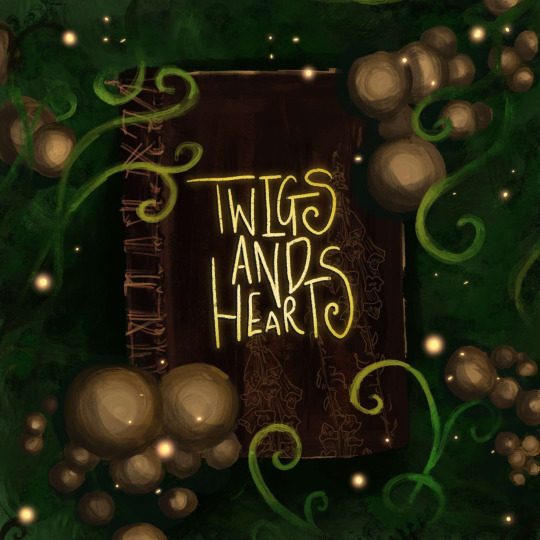
Twigs and Hearts Audio Drama A book that ties many together. Who picks up a copy? What powers do they serve? Between missing people and people missing, who will you trust? Twigs and Hearts. Open at your own risk. https://audiofiction.co.uk/show.php?id=20231002-10 RSS: https://anchor.fm/s/aedf777c/podcast/rss
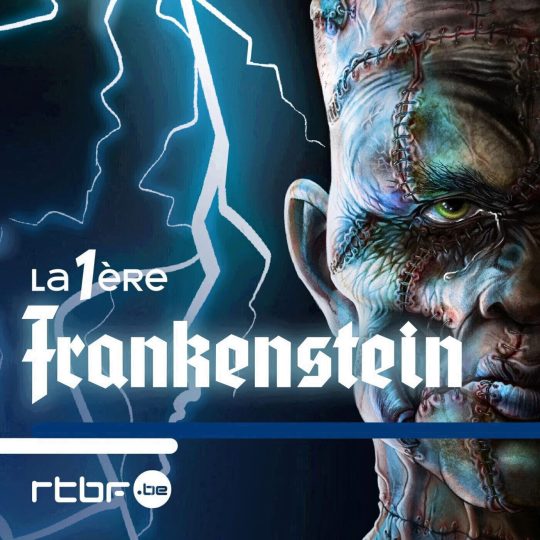
Frankenstein Audio Drama En expédition vers le pôle Nord, le capitaine Robert Walton et son équipage recueillent à bord de leur navire un homme et son traîneau, à la dérive sur la banquise. Cet homme entreprend alors de raconter son histoire au capitaine : il s’agit de Victor Frankenstein, un savant suisse. Originaire de Genève et adepte de la philosophie naturelle, celui-ci part étudier à Ingolstadt avec l’objectif de découvrir le moyen de donner la vie. Il se consacre alors corps et âme à son projet et finalement réussit à créer un être vivant assemblé des parties de chairs mortes. Horrifié par l'aspect hideux de l'être auquel il a donné la vie, Victor Frankenstein abandonne sa création. Mais cette dernière le poursuit, et décide finalement de se venger d'avoir été rejeté par son créateur et persécuté par la société. Ce podcast est une adaptation en 5 épisodes du roman "Frankenstein ou le Prométhée moderne" de Mary Shelley, paru en 1818. Adapté par Mehdi Bayad et réalisé par Christophe Loerke. https://audiofiction.co.uk/show.php?id=20231120-02 RSS: https://feeds.audiomeans.fr/feed/0c321f5e-9f33-4544-a240-bcb7930a113b.xml
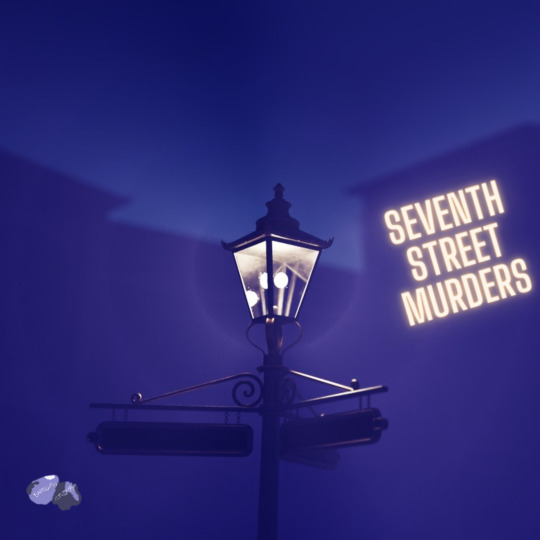
Seventh Street Murders Audio Drama There’s a murderer on the streets. Not any killer, one who tracks down his victims, punishing them as part of his sick game. With the old police commissioner retired, and his incompetent son in charge of the task force, it’s up to Detectives Lorenna Mimms and Raine Osborne to solve this mystery before it’s too late. https://audiofiction.co.uk/show.php?id=20230916-02 RSS: https://anchor.fm/s/e7650044/podcast/rss

Starfinder Audio RPG An actual play podcast version of the Starfinder Twitch show hosted by Dragonborn Industries. https://audiofiction.co.uk/show.php?id=20231121-03 RSS: https://feeds.redcircle.com/be70dc76-f285-41c0-9e7f-cce474d2c930
1 of 1 Podcast Audio Book Presented by 101 Pieces Publishing. https://audiofiction.co.uk/show.php?id=20231122-01 RSS: https://media.rss.com/1of1podcast/feed.xml
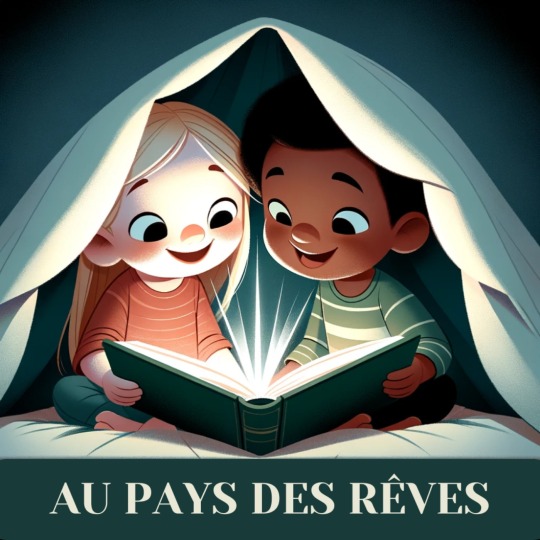
Au pays des rêves Audio Book Des contes pour enfants où se mêlent aventures et apprentissages de la vie. Les héros vont à la rencontres d'animaux et de mondes merveilleux. https://audiofiction.co.uk/show.php?id=20231120-03 RSS: https://feeds.acast.com/public/shows/au-pays-des-reves

Les Rôlistes Associés Audio RPG Bienvenue, prenez place! Venez écouter les péripéties de nos valeureux aventuriers. Ils se sont rencontrés par hasard dans une auberge de la petite cité de Guet aux Dagues et se retrouvent emportés dans une mystérieuse enquête dont les enjeux sont peut-être bien plus importants qu'au premiers abords. "Aventures et forts intérieurs", l'histoire de héros pas comme les autres... https://audiofiction.co.uk/show.php?id=20231120-04 RSS: https://feeds.acast.com/public/shows/655b2c66a08cd90012e62208
Shortwave Kitsch Radio Show Audio Drama New Stories; Vintage Vibes! Take an exciting leap back in time to celebrate the tradition of radio drama! Shortwave Kitsch is a comedic peek into a slice of history that’ll keep you wanting more! Each show is a new work written, performed, and recorded by local Charlestonians in front of a live audience. Every episode will be available here on the modern-day interwebs so you never have to miss out on any of our stories as we travel back in time, through space, out into the great Wild West, and all around the world. Come with us on your next adventure and hold on tight for this thrilling ride! https://audiofiction.co.uk/show.php?id=20231121-04 RSS: https://anchor.fm/s/ed2847c0/podcast/rss
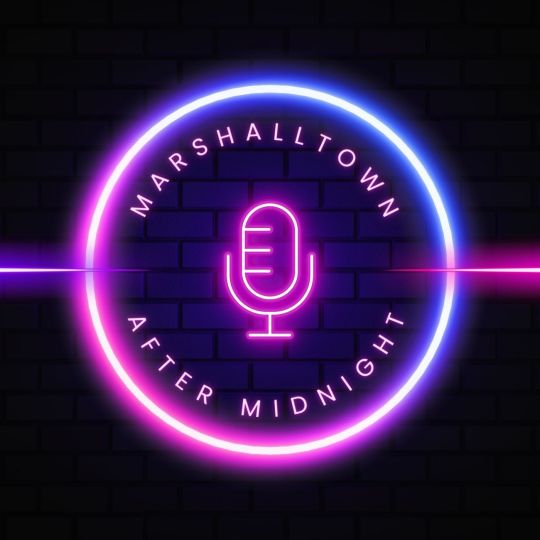
Marshalltown after Midnight Audio Drama Welcome to "Marshalltown after Midnight," a mesmerizing podcast series of short eerie tales and unsolved mysteries broadcast from the fictional WKLR Radio in Morris County's Marshalltown, Indiana. In the quiet hours of the night, our host, Alex Riddle, takes you on a journey through the uncanny and supernatural events that occur in the shadows of this seemingly ordinary town. Each episode unfolds a new story, revealing the hidden, sometimes chilling, aspects of Marshalltown and its inhabitants. From inexplicable phenomena to ghostly encounters, and from time anomalies to unsolved mysteries, "Marshalltown after Midnight" brings to life the tales that are whispered about but rarely spoken of in the light of day. Alex Riddle, with his soothing yet captivating voice, becomes your guide into the unknown, blending the charm of old-school radio storytelling with the intrigue of modern narrative. This podcast is not just for the lovers of the paranormal and the aficionados of suspense. It's for anyone who relishes a good story and the thrill of a mystery left on the edge of revelation. Every episode promises a unique blend of folklore, mystery, and the supernatural, making you question what's real and what lurks in the corners of your imagination. Join us at WKLR as we explore the peculiar happenings of Marshalltown. Remember, in this town, nothing is as it seems, and every shadow could tell a story. Are you ready to delve into the mysteries of Marshalltown after Midnight? https://audiofiction.co.uk/show.php?id=20231119-02 RSS: https://www.spreaker.com/show/6014714/episodes/feed
Dis juste quelques mots, pour décrire notre amour Audio Book Voilà mon premier podcast, Voici le contexte de l'histoire: Une jeune femme perdu trouve enfin l'amour , mais après plusieurs mois de couples . Elle était loin d'imaginer ce qu'il ce passait derrière son dos. Il était avocat . Assistante . Meilleure amie. Un véritable encu***. Elle décide de partir aussi loin qu'elle peut mais l'amour n'est pas si loin qu'elle le pense... et certains démons vont refaire surface. https://audiofiction.co.uk/show.php?id=20231122-02 RSS: https://anchor.fm/s/edb64174/podcast/rss

Neon Inkwell Audio Drama This innovative compilation series features short form podcasts from a variety of creators. This project looks to highlight new and underrepresented creators, as well as showcasing a few from recognized Rusty Quill favourites. Whether it’s a post-apocalyptic space thriller or a quirky monster road trip, Neon Inkwell listeners will always have something new to discover. https://audiofiction.co.uk/show.php?id=20231124-01 RSS: https://feeds.acast.com/public/shows/neon-inkwell

Gone Bush Audio Drama Gone Bush- Blue Mountains is a 7 part brand-crafted comedy from Dweezl Productions. Written by Brett Danalake and Iain Triffitt, based on their play. Directed by Malcolm Frawley. Produced by Beth Champion https://audiofiction.co.uk/show.php?id=20231123-01 RSS: https://www.gonebush-bluemtns.com.au/feed.xml

Forgive Me Father Audio Drama Forgive Me Father is a techo-surreal horror that takes place both in the virtual reality world of Bright City as well as the real world. https://audiofiction.co.uk/show.php?id=20231123-02 RSS: https://feeds.acast.com/public/shows/forgive-me-father

Build a Prince: A Royal Christmas Love Story Audio Drama When fiercely independent Princess Adelaide of Alpinoa discovers she must be married by Christmas in order to be crowned queen, she decides to secretly create the perfect prince out of handsome American commoner, Hayden. What’s intended as a formal arrangement turns into something more when Hayden’s kindness and unconventional charm begin breaking down her walls. But little do they know, not everyone wants her to be queen, forcing Adelaide to fight for her country, open herself up to love, and come to terms with who she’s meant to be - all in time for Christmas. https://audiofiction.co.uk/show.php?id=20231124-02 RSS: https://feed.podbean.com/buildaprince/feed.xml

Voices from the Ledge Audio Book Have you ever felt so desperate or so depressed that you felt like giving up? Be honest, now, did you ever say to yourself, ”I’m probably worth more dead than alive?” Julie suffered from Empty Nest Syndrome. She had been forced into early retirement while her husband had hit the pinnacle of his career. She was lost. What she didn’t know was that her depression was normal. But Julie had a plan. She was going to end her misery, however, in the execution of it, a remarkable thing happened. She meets four women who were at the same hotel on a girl’s get-away weekend. They have a very strange impact on her. Find out what happens when you’re about to give up on life, but that gets interrupted by strangers who really have lived life~! https://audiofiction.co.uk/show.php?id=20231117-05 RSS: https://feed.podbean.com/voicesfromtheledge/feed.xml
4 notes
·
View notes
Text
So I think I busted enough skulls to get the attention a' this weirdo faction on the moon.
As in, he called me on an open channel an' told me ta' stop bashin his boys skulls. Nolsey chimed in, cause he's one a' them "I listen to police scanners fer fun" kinda geezers, an' says, "Make your boys quit harassing my boys, you cunt."
An' then everyone on the moon who happened to have an active comm on that channel started feckin' cacklin'. Like fifteen people happened to be on the ol' shortwave. Open Datalight comms channels get picked up on shortwave comms as interference fer... reasons? Echus explained it ta' me when he was helpin' me fix the radio station.
The whole vibe on the moon is always pretty relaxed. Things happen slowly, strangely. The locals ain't got the same kindsa problems as Wayouddans do, generally worse ones, but ah... they jus' move on through.
Moon's a silly place, I'm sayin', but this weirdo-faction's had everyone tense. That walkin' hunk'a marble that Auntie uses as an executioner, Guy, he terrorized the lot of 'em fer a few days, an' that kinda broke the tension, but things were gettin' ominous again. Nolsey says that dropships're movin' around on the edge of the Sporewood.
But, you know, the chief feckin' mailman callin' yer mystery paramilitary chief a cunt? That'll level everyone back out fer a bit.
1 note
·
View note
Text









Reception was pretty terrible tonight. Listening to the Friday morning 0030 Zulu time broadcast on 9265 AM.
Here is the lineup for today's program, in MFSK modes as noted:
1:42 MFSK32: Program preview (now) 2:48 MFSK32: BepiColombo spacecraft flies by Mercury again 6:16 MFSK64: Using smartphones to study the ionosphere 10:14 MFSK64: This week's images 27:58 MFSK32: Closing announcements
Please send reception reports to [email protected]
And visit http://swradiogram.net
We're on Bluesky now: swradiogram.bsky.social
From Phys.org:
BepiColombo's fifth Mercury flyby
by European Space Agency December 2, 2024
On Sunday 1 December 2024, BepiColombo flew past the planet Mercury for the fifth time, readying itself for entering orbit around the solar system's mysterious innermost planet in 2026.
The spacecraft flew between Mercury and the sun, getting to within 37,630 km from the small planet's surface at 15:23 CET. This is much farther than its first four flybys of the planet, when BepiColombo flew as close as 165–240 km from the surface.
What made this flyby special is that it was the first time that BepiColombo's MERTIS instrument was able to observe Mercury. This radiometer and thermal infrared spectrometer will measure how much the planet radiates in infrared light, something that depends on both the temperature and composition of the surface.
This was the first time that any spacecraft measured what Mercury looks like in mid-infrared wavelengths of light (7–14 / &etiometers). The data that MERTIS will collect throughout the mission will reveal what types of minerals the planet's surface is made of, one of the key Mercury mysteries that BepiColombo is designed to tackle.
BepiColombo's other science instruments will monitor the environment outside Mercury's magnetic field. Among other things, they will measure the continuous (but changeable) stream of particles coming from the sun known as the solar wind.
The other instruments switched on during this flyby are the magnetometers MPO-MAG and MMO-MGF, the MGNS gamma-ray and neutron spectrometer, the SIXS X-ray and particle spectrometer, the MDM dust monitor and the PWI instrument that detects electric fields, plasma waves and radio waves.
BepiColombo, a joint mission between ESA and the Japan Aerospace Exploration Agency (JAXA), will be the second and most complex mission ever to orbit Mercury. It comprises two science orbiters: ESA's Mercury Planetary Orbiter and JAXA's Mercury Magnetospheric Orbiter. While on their way to Mercury, the two orbiters are both attached to the Mercury Transfer Module.
Shortwave Radiogram now changes to MFSK64 …
, w mi ouK:RÚrÿudR Before RSID: <<2024-12-06T00:36Z MFSK-32 @ 9265000+1500>>
This iahortwave Radiogram in MFSK64
Please send your reception report to [email protected] H m rSH4rhIo( baQ Boulder
Engineers transform smartphones into instruments for studying space
By Daniel Strain November 13, 2024
That ordinary smartphone in your pocket could be a powerful tool for investigating outer ssweiea
In a new study, researchers at Google and CU Boulder have transformed millions of Autofid phones across the globe into a fleet of nimble scientific instruments - generating one of the mosoMdetKÁx eaps to date of the uppermost layer of Earth's atmosphere.
The group's findings, published Nov. 13 in the journal Nature, might help to improve the accuracy of GPS technology worldwide Hmfold. The research was led by Brian Williams of Google Researnt /×nir ehxed Jade Morton, professor in the Anntd ×. Smead oeYe8nt of Aerospace Engineering Sciences at CU Boulder.
"These phones can literally fit in your palm," Morton said. "But through crowdsourcing, we can use them to change the way we understand the space environment."
She and her colleagues used the GPS sensors that come standard in every smartphone to collect dat,tfw 4trt1-ehet?ere warped signals coming from satellites. In the process, they were able to view phenomena in the atmosphere, such as blobs high above the planet known as "plasma bubbles," in never-before-seen detail.
The group released its data publicly so that anyone can watch how the atmosphere swirW ad h shifted over about eight months. "Collaboration is c [ral to scientific progress and to our scientific research at Google," said Lizzie Dorfman, product lead for Science AI in Google Research. "Dr. Morton's expertise was essential to this research, and it has been an absolute pleasure working with her as a visiting researcher and collaborator."
Eye on the ionosphere
The study puts new focus on the ionosphere, a wispy layer of the atmosphere that stretches moeliN[e`t¥ eDtÓc(oblGace.
It's a volatile arena: Heratoc ´itfrom the sun constantly beat down on the 6mosphere, s1 P its molecules and atoms into a soupy mix of charged particles - what scientists call a plasma. It also never stays still.
"At 2 o'clock in afternoon, there are a lot more charged particles in the ionosphere because the sun is at its strongest," Morton said. "But at night, the sun is on the other side of the planet, so we have very few charged particles."
That fluctuation can play havoc with GPS technology.
Morton explained that the technology works through a sort of stopwatch in space: Satellites thousands of miles from Earth first beam radio waves to the planet. Your phone then pinpoints your location by measuring how long it takes those signals to reach the ground.
Scientists try to account for how the ionosphere mit shift that timing by mapping this region of space using radar dishes on the ground. Currently, however, they can onlyXateRt 14% of the ionosphere at any one time. As a result, GPS devices may miss your exact location by anywhere from a few to several dozen feet.
"There are a lot of applications that require a lot of accuracy - for example, landing aircraft," Morton said.
Bubbling up
In the current fc, n, the researchers landed on an unusual idea: RatheÏea ivy on expensive radar dishes, they could map the ionosphere using a suite of sensors that already existed in every country on Earth: Android phonea¦
The ionosphere maps are created using aggregated measurements of the radio signals between satellites and the receivers in some qa eivices. Privacy protections ensure tcese measurements do not identify any contributing individual devices.
In particular, th&easfo}he phones toqk in real time how the ionosphere stretches out radio waves coming frn stellites.
The team reported that, on its own, this worldwide fleet could observe roughly 21% of the ionosphere - potentially doubling the accuracy of GPS devices worldwide.
"Millions of phones together can do a much better job of2onitoring the atmosphere than our ground network," Morton said.
The group's maps also capture the ionosphere in brilliant detail.
In May 2024, for example, a powersitt solar storm struck Earth just as the group's cell phones were looking upxn the hours that followed, huregions of atmosphere, or "plasma bubbles," containing low concentrations of charged particles formed above parts of South Ameri°hose bubbles then rose through the ionosphere like wax in a lava lamp.
Morton, for her part, says the study shows the untapped potential of the everyday technologies that many people take for granted.
"I have spent my lifetime building dedicated instruments to do scientific research," Morton said. "But as technology advances in our society, we see all these sensors at our dispo2 Ôea t have a lot more power than we ever imagined."
https://www.colorado.edu/tv /2024/11/13/engineer, àida nsmartphones-inste , P+p¶; fh9eHn tR#l rh+Yd eµh ¯er di1dtfrtwave Radiogram in MFSK64
Please send your reception report to [email protected]
@swradiogram
1 note
·
View note
Text
The Silence and Radio Tales

Well hello again. It’s been over two years since I last wrote anything on here, a very long time indeed. Since 2022 lots of things have happened. I’m now involved in a local radio station here in Brighton, Regency Radio, and I’m the traffic and travel reporter for the station. It’s great and I absolutely love it.
It has meant that I’ve neglected a lot of things, short wave listening, spending nights parked up on a hill DXing, finding exciting new international stations to listen to, and of course, this blog. I really should do better.
Anyway, that’s my excuse for not writing anything on here for a couple of years.
Going onto international radio, my podcasts have recently taken a hit as another favourite source has closed down. You may remember I wrote about the demise of Radio 360 on an earlier blog post here, well now Radio Ben has closed down without any warning. I did email the owner back in March 2024 but never got a response so I can only guess that it’s gone for good.
While I still get Radio Poland, Radio Taiwan International, Radio Prague, Radio Romania International and Radio Slovakia International, I’ve lost a lot of stations I used to enjoy – Radio Owaz, Radio Habana Cuba, Radio Belarus, Voice of Vietnam, Voice of Indonesia, and Radio Thailand World Service. I haven’t found any replacement podcasts yet.
I guess I should say that I work nights as well as the radio job, so podcasts are better for me as I can listen as I’m driving round the roads of Sussex and Surrey.
If anyone knows of alternative sources or feeds, please do let me know.
In the meantime, I’ll have to stick with the archive podcasts I have.
Now a short musical break, courtesy of Radio Thailand World Service – a song they used to play during those weird old COVID days of 2020-2022
youtube
Welcome back.
Radio Ukraine International have stopped their English Service broadcasts. The one hour English service programmes ceased following the Russian invasion, but there was a nightly Ukraine Security Issue broadcast, as well as some other programmes that were produced through Soundcloud. Ukraine Security Issue bulletins ended in November 2023 and could be received here in the UK on 1386 kHz quite clearly.
youtube
I’m friends with the people who made, and produced, those programmes and I’ve shared how they are missed. I’m glad that their doing well despite the conditions they find themselves in.
…and finally, yesterday I came across piece of shortwave audio that’s still a mystery. It’s one from my early days of listening so the info I recorded, frequency etc wasn’t noted. Bad I know. If you can name the station, or indeed the song, I’d love to hear from you. I was thinking that it may be Ethiopian, possibly Radio Fana?
youtube
Anyway, that’s about it for now. I’ll try and update this regularly, but if not, see you in another couple of years
1 note
·
View note
Text
041 of 2024
My top 5.
Animals 1. Cat 2. Rabbit 3. Cheetah 4. Elephant 5. Lynx
Bands/Artists 1. HRFTR 2. Vildhjarta 3. Katatonia 4. Suicide Commando 5. Tourist LeMC
Countries you want to visit 1. Finland 2. Sweden 3. Spain 4. Argentina 5. Hungary
Videogames (I don't play videogames, so skipping it) 1. 2. 3. 4. 5.
Movies (I don't watch movies, so skipping it) 1. 2. 3. 4. 5.
Anime (I don't watch anime that much, but maybe I can make something out of it; no particular order) 1. Elfen Lied 2. Kara no Kyoukai 3. Sailor Moon 4. Magic Knight Rayearth 5. ?
Drinks 1. Coca Cola (sadly I can't) 2. Coffee (just like above) 3. Orange juice 4. Apple juice 5. White wine (again, I can't)
School subjects 1. Physics 2. Computer sciences 3. Biology 4. Chemistry 5. Math
Hobbies 1. Photography 2. Shortwave radio and signal identification 3. Trainspotting 4. Medical subject, neurology in particular, but not limited to this 5. Conspiracy theories and unsolved mysteries
Books (there's too many I can't just choose, so skipping for now, maybe I'll come back later) 1. 2. 3. 4. 5.
1 note
·
View note
Text
0 notes
Text
Meanwhile, an impromptu poll
#hanna barbera#today's poll#survey says#who could you imagine spending a week on the road with?#hannabarberaforever
0 notes